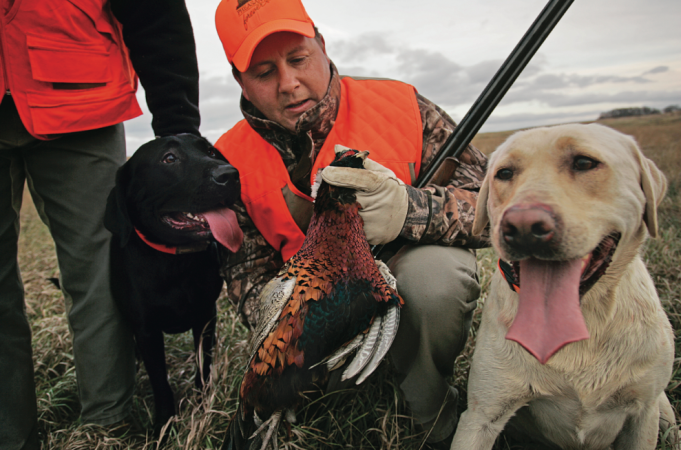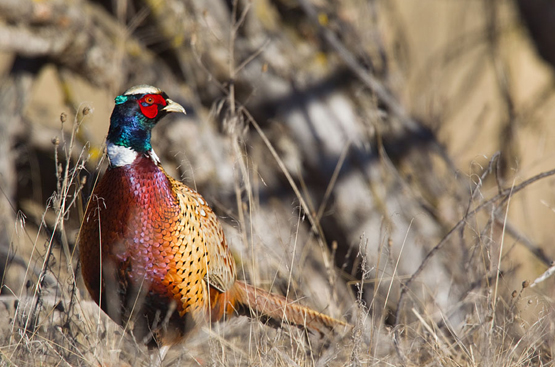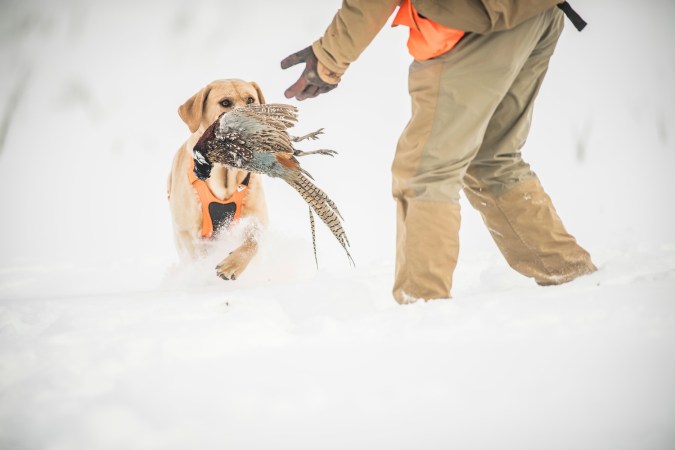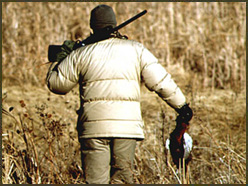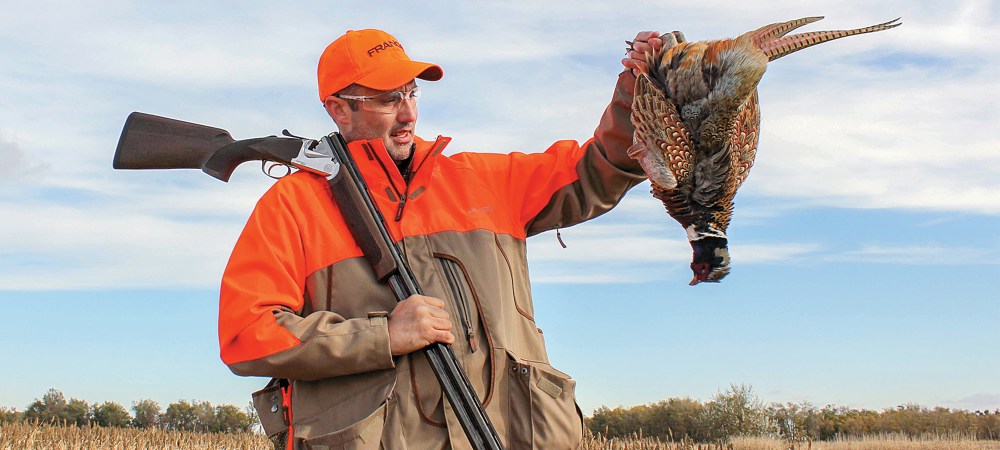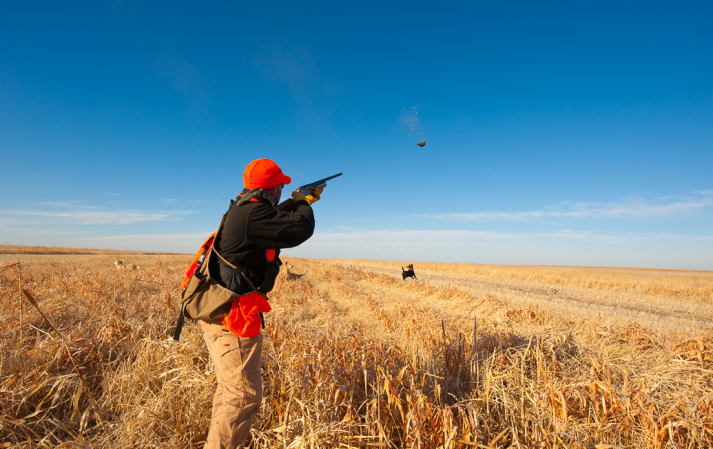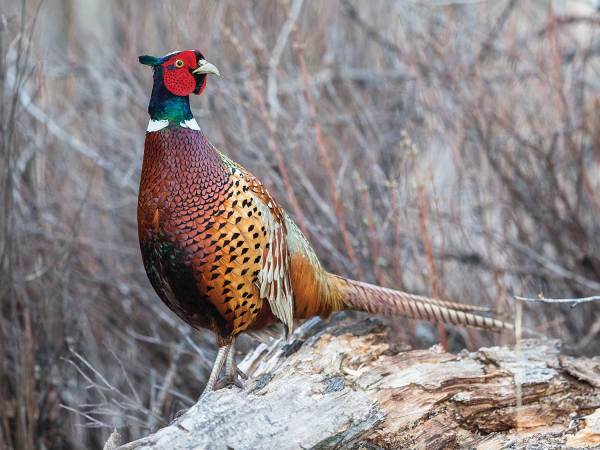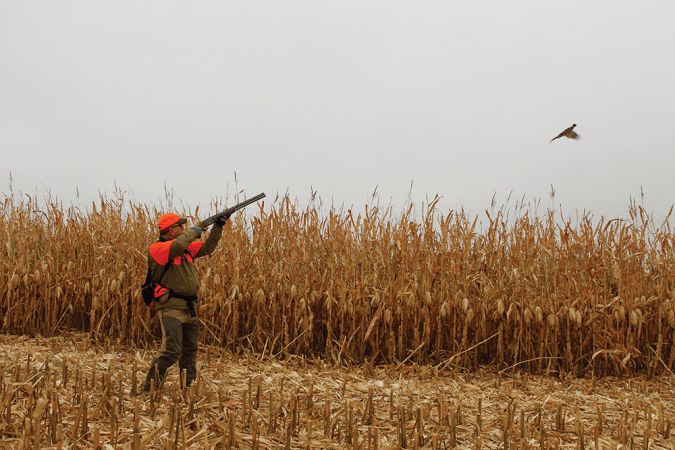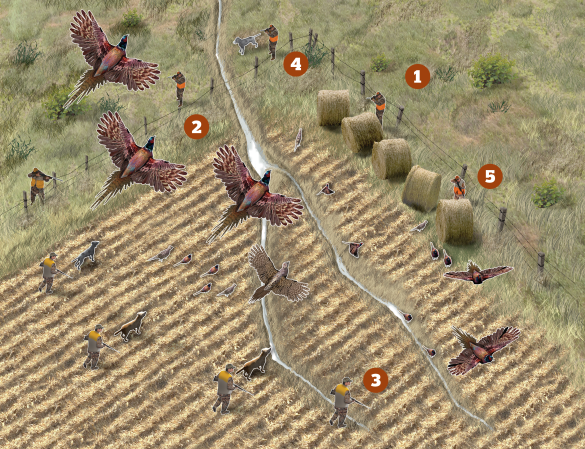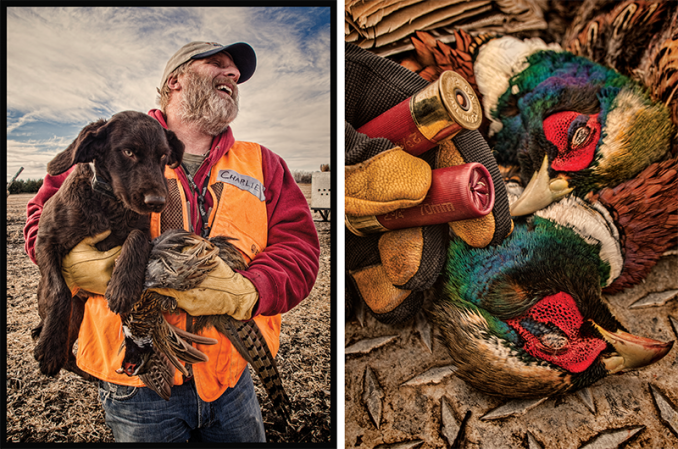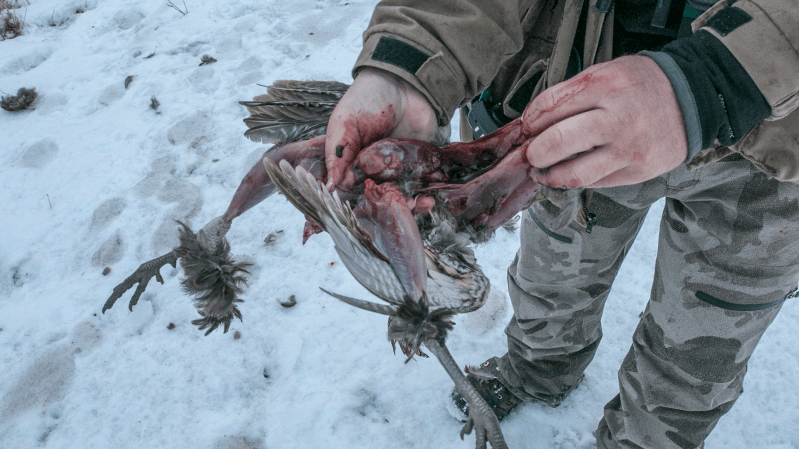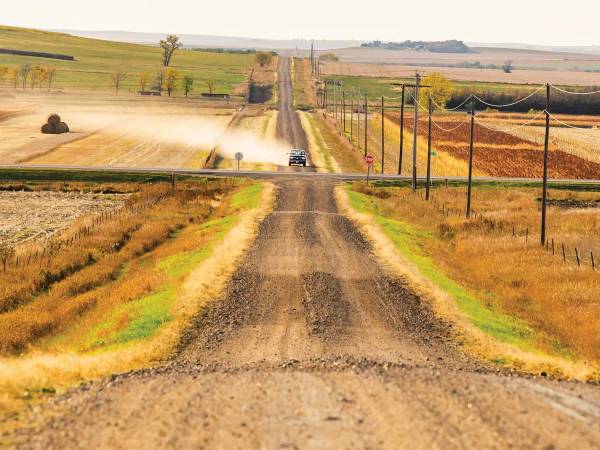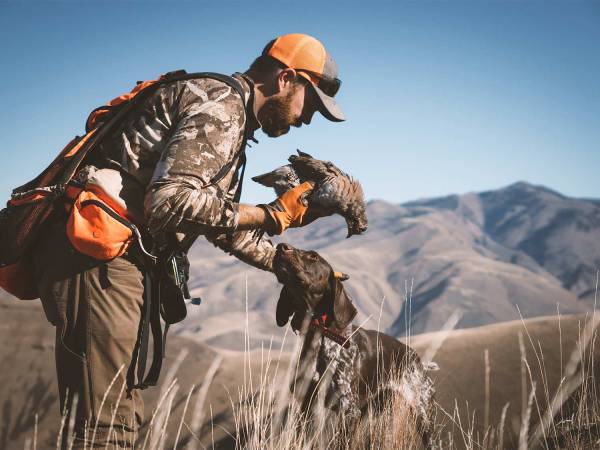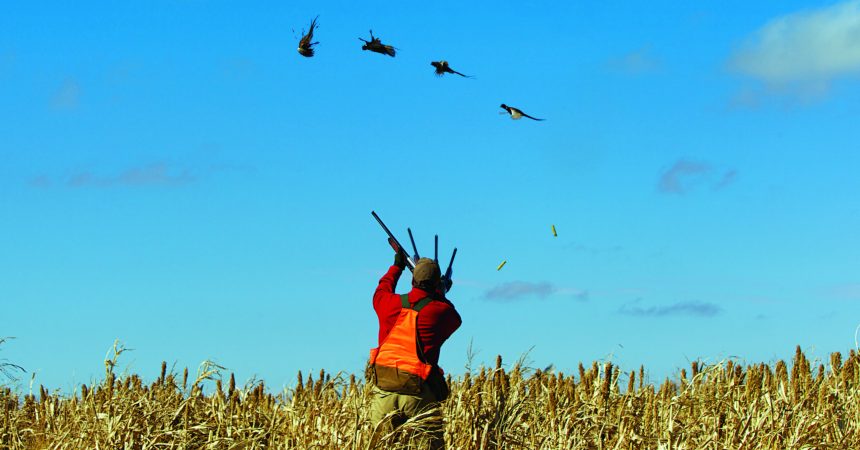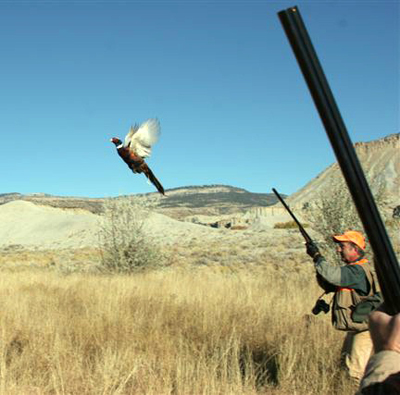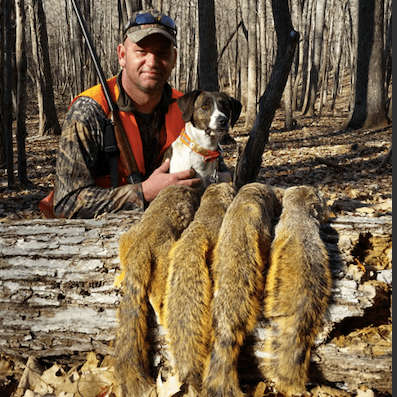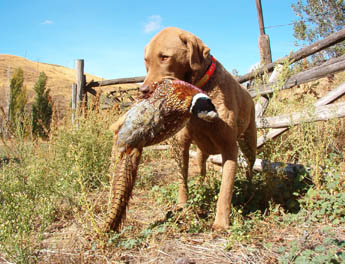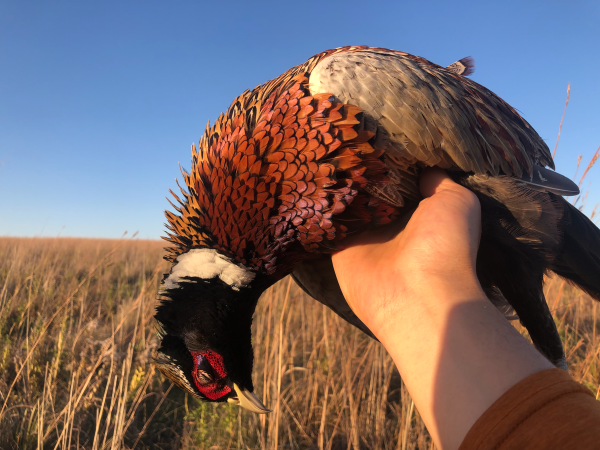Photo by Denver Bryan/Images on the Wildside
Hardy and experienced, late-fall roosters are also scarce, paranoid, and elusive. October’s easy pickings are gone. Here’s how to hunt the cagiest, most neurotic game bird you will ever encounter.
1. Sneak In
Wary roosters can’t smell you, but they can hear you. Don’t park near your hunting area. Instead, pull in down the road, get ready silently, put your dog on a lead, and walk back. Rumbling up, slamming doors, talking, rummaging, and whistling at dogs will send roosters running or flying.
Tip: Before your first stop of the day, give your dog a little “pre-run” somewhere else to work off excess energy.
2. Hunt Quietly
Do you talk and laugh back and forth with hunting partners while pursuing big game? Show November’s roosters equal consideration. Work out hand signals with your buddies so you can communicate silently as you hunt. Remove beepers from your dog and train her to respond to the softest toots on your whistle.
Tip: A slow pace works best. November roosters circle, sneak, and skulk around you. Slowing down gives your dog more chances to work, and makes roosters fidgety.
3. Attack Twice
Don’t give up. If you don’t move birds on your first swing, work the cover again from a different angle. Hit different corners and pockets. There are birds around; sometimes it just takes a second pass to get them moving.
Tip: The thicker the cover, the more times you can work it. On some occasions, it has taken me three passes to get birds boiling out of a cattail thicket.
4. Think Nasty
Forget Flat, grassy fields. Opt for the ugliest cover you can find. Cattails offer pheasants thermal protection, tunnels to slither through, and hidey holes to tuck into. Hunt raspberry canes, multiflora rose tangles, plum brush, and other thorny thickets.
Tip: Wear hip boots. The birds think they’re safe in wet marshland expanses where hunters don’t like to go. Wade after them. Birds will congregate on dry hummocks and islands.
5. Locate Transitions
Find ringnecks in transition zones and along edges–the corners and seams where cover types mix. Places where food, thick escape cover, and thinner loafing cover meet are perfect.
Tip: When hunting a wet edge, such as between grass and marsh, put those hip boots to work on the watery side. Many times I have heard pheasants splashing as they run.
6. Stay Late
Take a midday break so you can hunt the last two hours of daylight. The last half hour of legal shooting light can offer the best hunting of the day.
Tip: Scout roosting fields in your area and save one for last. Pheasants become vulnerable as they head to lighter grass areas to roost, and cockbirds are reluctant to run once they’ve settled in.
